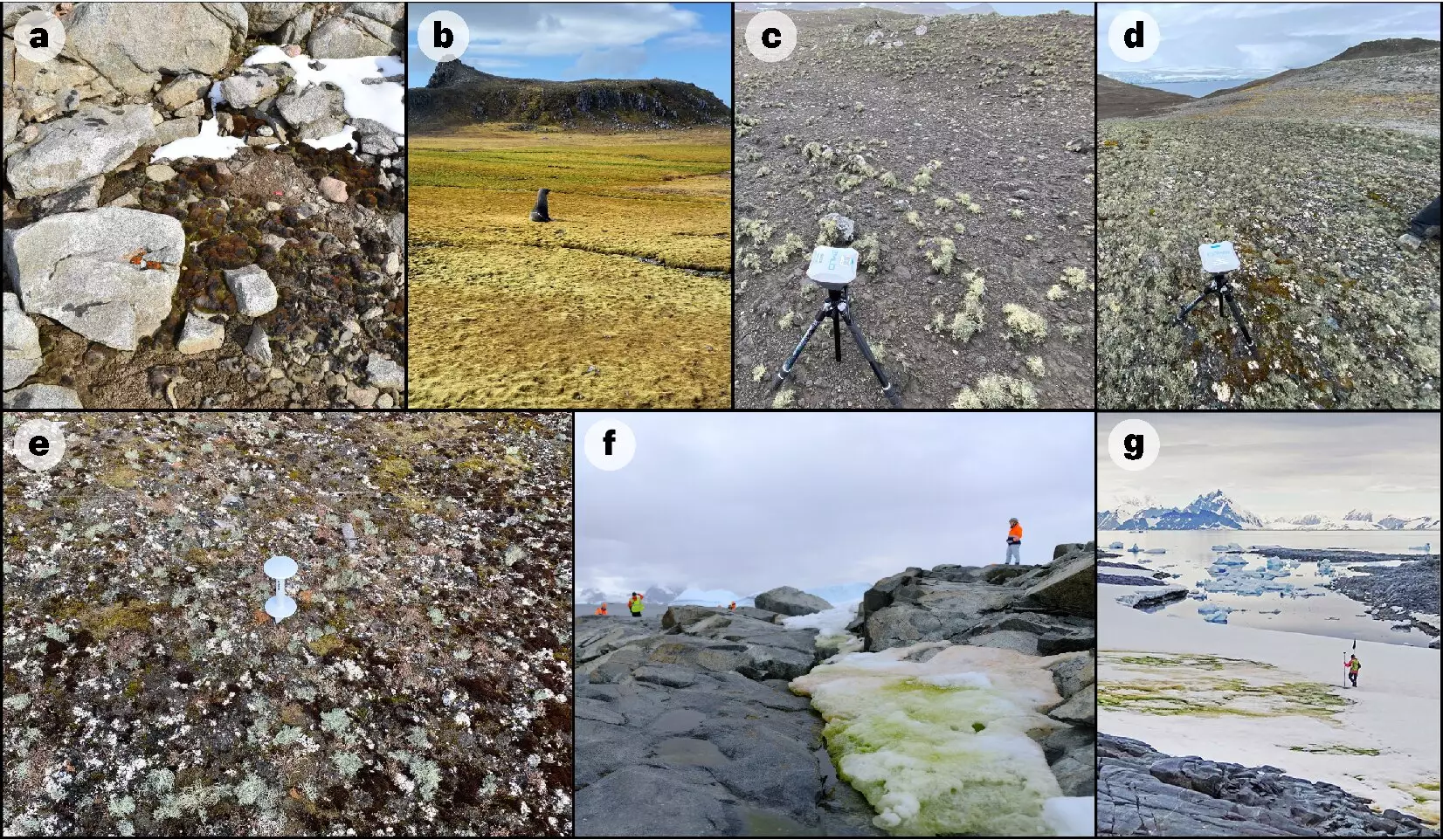Recent advancements in the study of Antarctica’s delicate ecosystem have unveiled the continent’s intricate plant life in an unprecedented manner. This pioneering continent-wide mapping study, published in the esteemed journal Nature Geoscience, taps into the hidden biodiversity of Antarctica, revealing previously unexplored regions of growth among mosses, lichens, and algae. This research is pivotal in shaping conservation strategies, as changing climate conditions pose a significant threat to these resilient organisms.
The Methodology Behind the Findings
Harnessing cutting-edge technology, scientists utilized a satellite from the European Space Agency to conduct a comprehensive survey of Antarctica’s vegetation. The satellite imagery was meticulously integrated with field research conducted over multiple summer seasons, ensuring that the data collected was both extensive and reliable. In total, the study identified approximately 45 square kilometers of vegetation, a striking area that showcases how certain regions, particularly around the Antarctic Peninsula, are coming to life despite the harsh climatic conditions.
This methodological approach highlights the effectiveness of remote sensing in evaluating environmental changes in hard-to-reach places. As a result, scientists now possess a robust baseline that can be continually monitored to gauge how plant life responds to the ever-evolving challenges posed by climate change.
The discovery that over 80% of the identified vegetation growth is concentrated in the Antarctic Peninsula and its vicinity underscores the region’s ecological importance. This densely vegetated area, despite making up a mere 0.12% of Antarctica’s total ice-free territory, is poised to become a critical focus for conservation efforts. The results bring forth a pressing need to reevaluate current protective measures, as experts argue that existing Antarctic Specially Protected Areas (ASPA) inadequately represent zones of significant vegetation abundance.
Each identified plant species, particularly the resilient mosses and lichens, plays a crucial role in the local carbon and nutrient recycling processes. These organisms have adapted remarkably to survive in one of the world’s most inhospitable environments, showcasing nature’s tenacity. The current findings provide a window into understanding how these vital plant life forms function and interact within their ecosystems.
As the study emphasizes the environmental sensitivity of Antarctic vegetation, such organisms serve as invaluable indicators of regional climate changes. Their diverse adaptations may offer insights into how similar vegetative types could react to climatic shifts in other vulnerable ecosystems, including regions within the Arctic. By tracking the presence and performance of these species in their natural habitat, scientists can glean patterns that might foreshadow broader environmental changes in the face of global warming.
Charlotte Walshaw notes, “Our continent-scale map provides key information on vegetation presence in areas that are rarely visited by people.” This data is revolutionary, reshaping the understanding of vegetal distribution across the stark Antarctic landscape, while Dr. Claudia Colesie accentuates that identifying these resilient organisms opens doors for targeted conservation initiatives that can effectively protect their future.
Future Implications for Conservation
The study significantly advances our understanding of Antarctica’s fragile ecosystems, bringing attention to the necessity of conservation practices tailored for these resilient plant species. As researchers continue to utilize low-impact remote sensing methods for studying this delicate environment, the ability to monitor changes over time increases. Dr. Andrew Gray echoes this sentiment, advocating for ongoing vigilance as the climate evolves.
Overall, this monumental study serves as a precursor for establishing more effective conservation methods in Antarctica. By shedding light on the continent’s vegetative cover, the research lays the groundwork for sustainable management strategies that preserve not only the unique flora of Antarctica but also contribute to a broader understanding of ecological resilience in the face of climate change globally. The implications of this research reach far beyond Antarctica, setting a precedent for the protection of fragile ecosystems everywhere.


Leave a Reply